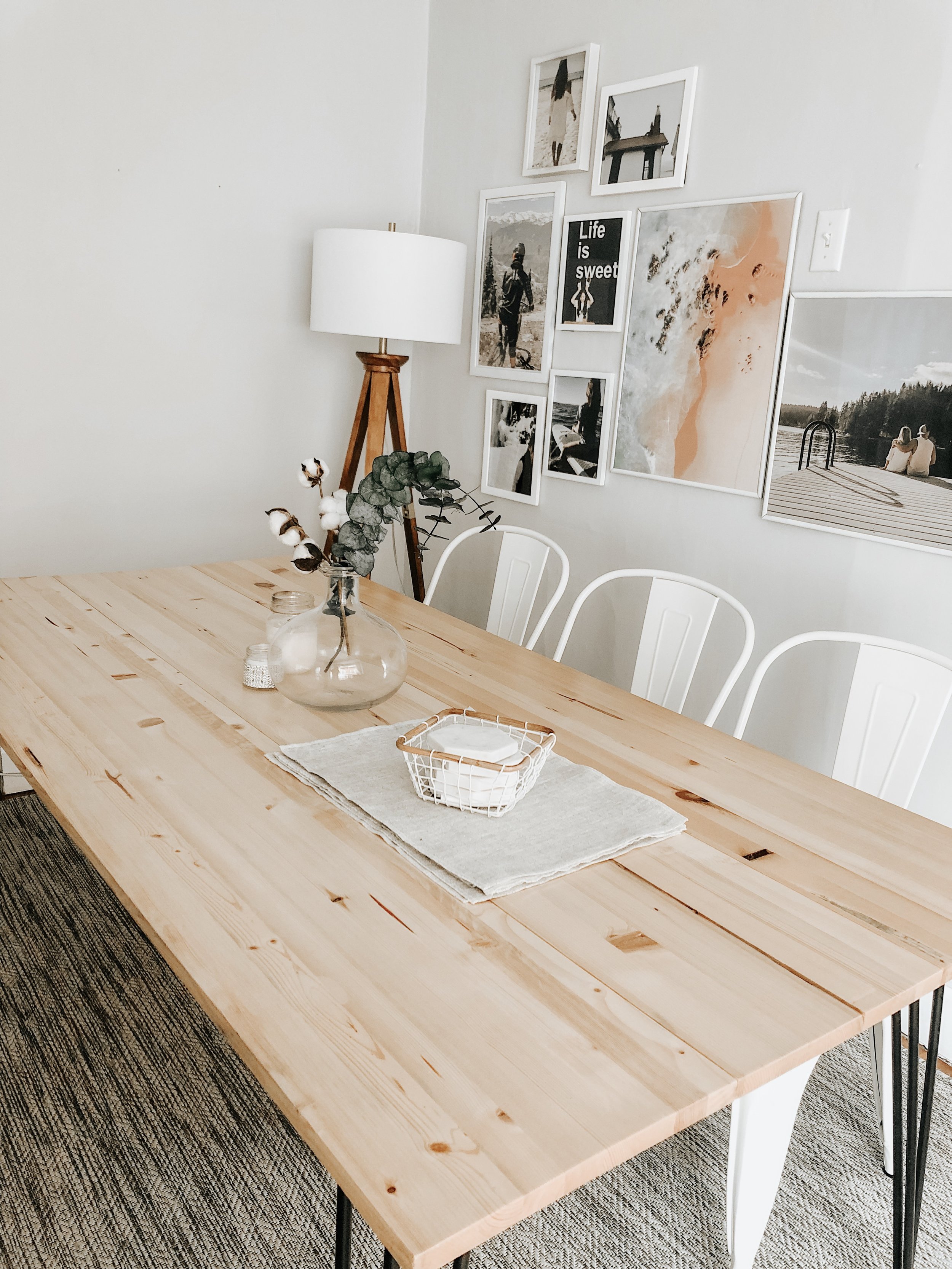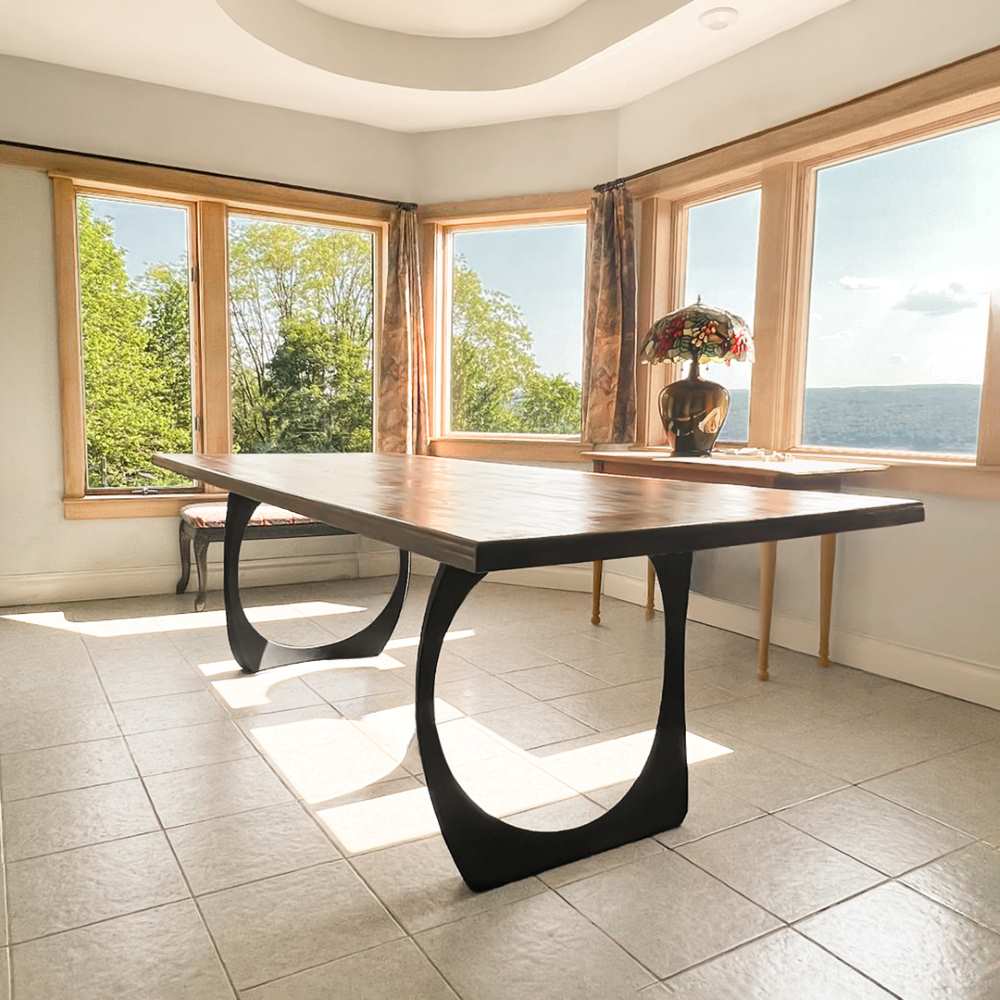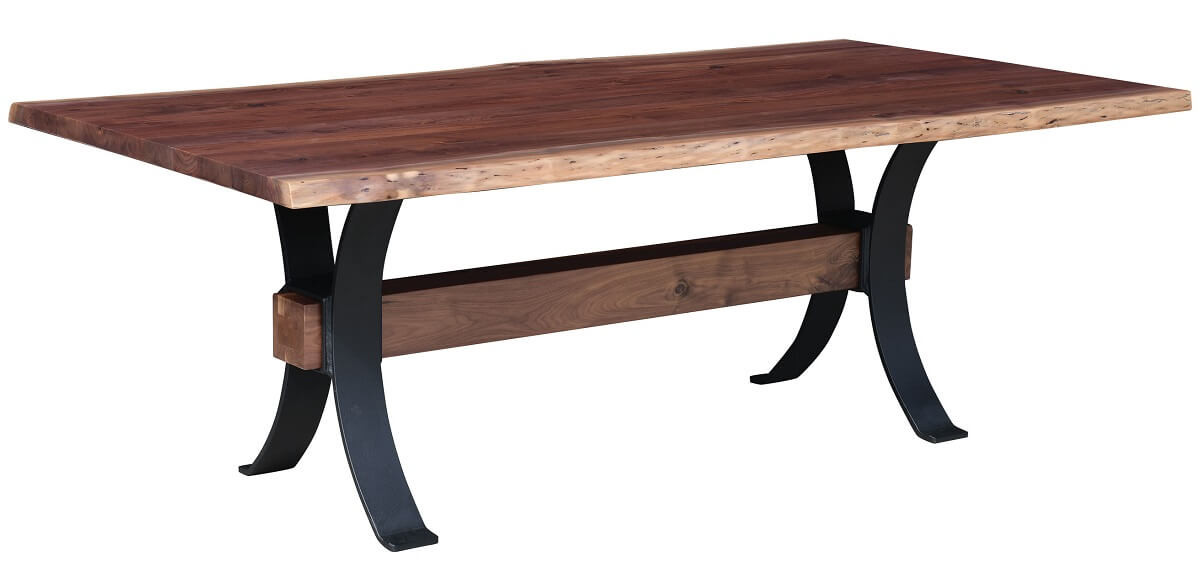Transform Your Dining Space with Stylish Dining Room Table Legs
Wiki Article
Just How to Select the Perfect Dining Space Table Legs for Your Home Decor
Picking the excellent dining area table legs is a nuanced procedure that needs cautious consideration of numerous elements, including your room constraints, aesthetic preferences, and sensible demands. The interaction in between dimensions, products, and designs can considerably influence the atmosphere of your dining location, making it essential to approach this decision methodically.Assess Your Eating Area
Evaluating your dining room is vital for picking the right table legs that match both looks and functionality. Begin by measuring the measurements of your dining area, including ceiling height, flooring area, and proximity to various other furniture. This info will certainly aid figure out the ideal size and height of your table, which directly affects the option of table legs.Next, think about the design and design of your dining space. As an example, an open-concept design might profit from table legs that supply aesthetic agility, such as slender metal or acrylic alternatives. Conversely, a more traditional setup might ask for tough wood legs that offer a feeling of permanence.
Review the existing color scheme and products in your eating area. Harmonizing the table legs with these aspects creates a cohesive look that improves the total decor. In addition, think about the performance needed in your area. If you often organize large gatherings, consider legs that provide added support and stability.
Inevitably, a detailed assessment of your dining area will certainly assist you in making a notified decision, ensuring that your table legs not just boost the visual appeal but also serve functional purposes.
Consider Your Style Preferences
When selecting eating room table legs, it is essential to assess your individual design choices, as they dramatically affect the total visual of your dining space. Your selection of table legs can either enhance or comparison with existing decor, making it critical to straighten them with your recommended interior decoration style.If your home leans towards a contemporary aesthetic, consider sleek metal or minimalist wooden legs that supply a clean, minimalist appearance. For an extra typical strategy, ornate wooden legs with complex makings can include a touch of sophistication and refinement. Industrial designs benefit from robust, basic materials such as reclaimed wood and steel mixes, showing a rugged charm.
In addition, farmhouse and rustic designs commonly favor durable, chunky legs that stimulate a feeling of heat and comfort. Alternatively, if your design is eclectic, you might choose non-traditional forms or a mix of materials to produce visual interest.

Evaluate Product Options
The choice of product for eating room table legs plays an essential role in both longevity and aesthetic appeal. Typical products include wood, steel, and composite alternatives, each offering unique attributes that can influence the general look and long life of your table.Timber is a traditional option, known for its heat and convenience. Woods like oak and walnut offer extraordinary strength and can be ended up in different stains to match any kind of decoration. Softwoods like yearn are more vulnerable to dents and scratches, making them less ideal for high-traffic locations.
Metal legs, usually crafted from steel or light weight aluminum, radiate modernity and industrial beauty. They are extremely durable and immune to use, making them ideal for families with children or frequent celebrations (dining room table legs). Furthermore, steel can be ended up in numerous shades, boosting the personalization possibilities
Composite materials, such as MDF or laminate, offer affordability and varied styles. While normally less long lasting than strong wood or metal, they can still provide a trendy appearance and are often easy to preserve.
Eventually, the material you pick must line up with your lifestyle, aesthetic preferences, and the level of usage your dining table will certainly experience.
Determine Elevation and Dimension
Selecting the ideal elevation and dimension for your dining-room table is vital for both functionality and convenience. The conventional height for eating tables typically varies from 28 to 30 inches, allowing adequate legroom for most people when seated. Nonetheless, it is essential to consider the dimensions of your eating room and the sorts of chairs you intend to use.
Furthermore, take into consideration the percentages of your eating space. A check here bigger table in a large location can produce a grand ambiance, while a smaller sized table functions well in even more intimate setups. Eventually, the appropriate height and dimension will certainly balance with your overall decoration and improve the eating experience for you and your visitors.
Explore Modification Possibilities

In addition, the style of the legs can be personalized to fit numerous styles, such as rustic, modern-day, or industrial. Tapered legs can evoke a mid-century modern-day feeling, while beefy, block-style legs may resonate with standard or farmhouse decoration.
Homeowners can likewise check out shade finishes, from all-natural timber spots to repaint, allowing them to match or comparison with the tabletop and bordering style.
Additionally, leg height can be gotten used to suit particular seating arrangements or resource personal choices, boosting both comfort and performance.
Last but not least, unique decorations, such as makings or decorative brackets, can better individualize the table legs, making the eating experience not just a meal however a declaration piece in the home. By taking into consideration these personalization alternatives, home owners can develop a dining-room table that really reflects their uniqueness.
Conclusion
Picking the perfect dining-room table legs needs mindful factor to consider of numerous elements, consisting of the measurements of the eating area, style preferences, product durability, and preferred height. Personalization choices additionally improve the ability to attain a cohesive aesthetic that matches the total design. By systematically assessing these components, homeowners can make certain that the selected table legs not only accomplish functional demands but additionally contribute positively to the eating experience and setting of the home.Choosing the excellent eating space table legs is a nuanced process that needs cautious consideration of numerous components, including your room restrictions, aesthetic preferences, and practical demands.Analyzing your dining space is important for picking the right table legs that enhance both aesthetics and functionality.When establishing dimension, gauge the location where the table will be positioned to guarantee it fits comfortably, enabling for at least 36 inches of clearance around the table for simple movement. A bigger table in a spacious area can develop a grand ambiance, while a smaller table works well in pop over to this web-site more intimate setups.Picking the optimal eating space table legs requires mindful consideration of different factors, consisting of the measurements of the dining area, design choices, material longevity, and wanted height.
Report this wiki page